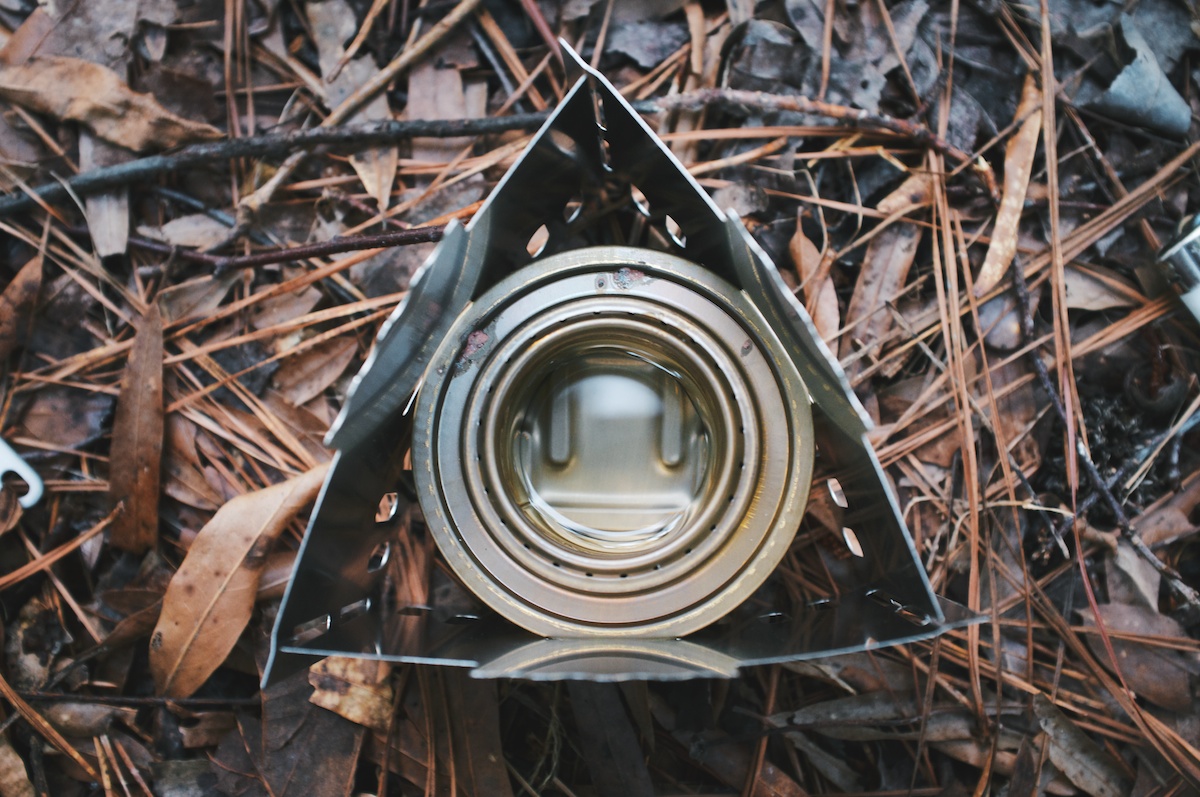Stoves for Bike Touring: A Primer (part 1)
There are many options for stoves to take on a bike tour, short bike packing trip or even a ‘coffee ride’. So, what makes a stove good for bike travel?
When purchasing (or making) a stove for a bike tour, the 3 most important factors to consider are:
1. Space
You can never have too much space on a bike tour; especially when you need room for food. For some, having an ultralight kitchen is a must.
2. Weight
This is a no-brainer, although it may be more important to shave grams when planning a bikepacking trip, more so than long-distance touring.
3. Fuel availability
It’s pretty amazing how this can change from country to country. For example, we were able to find white gas (which is lighter and cleaner – see below for details) in Mexico, but not in other Central American countries. Also, cooking alcohol, spirits, is readily available in east Africa, but not Mongoilia.
There are basically 3 types of stoves that folks ultimately decide to bring on a bike tour:
- Multi-fuel Stoves: The most popular are pressurized multi-fuel stoves which burn white gas, gasoline, and other types of fuel;
- Spirit burner Stoves: Spirit burners, such as the Trangia, or a DIY can stove, can burn methyl alcohol, medical alcohol, booze, and other spirits;
- Wood-burning Stoves: Wood burning stoves are especially good when traveling in a remote location over long distance in a dry climate.
- Canister Stoves: These are not nearly as versatile as pressurized canisters (butane/propane) aren’t always available.
There are many stoves that can be purchased (usually $20-200) as well as several designs that are fairly easy to DIY. In this post I will explore the pros and cons of four preferred stoves that can be purchased. In part two I will build several DIY stoves and test each for fuel consumption, time-to-boil and weight.
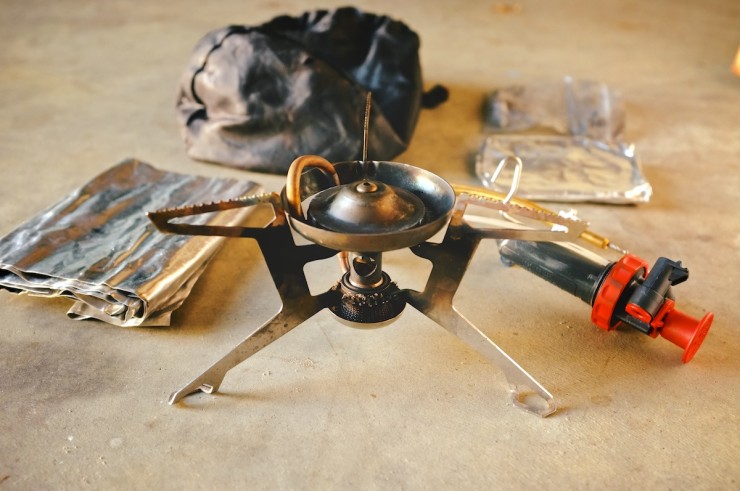
MSR Whisperlite International
The Whisperlite is the probably the most popular multi-fuel stove on the market, and the simplest. Like other multi-fuel options, it requires a few parts and pieces to operate and maintain: a windscreen, spare parts kit, pump and specific type of fuel bottle.
- Cost: $99 (approximately).
- Fuel: Burns White gas, kerosene and unleaded gasoline.
- Speed: Boils one liter of water in about 3 1/2 minutes using white gas.
- Packed Weight: 417 grams (Stove, pump, stuff sack, windscreen, maintenance kit).
- Packed dimensions: approximately 7″ x 6″ x 3.5″.
PROS
- Fuel options makes it a go-anywhere stove.
- Boils water fast.
- Lightest and smallest of the three pressurized options outlined in this post.
- Easy to maintain
- White gas (if you can get it) has light-weight properties: 1 oz (by volume) weighs approx. .8 oz.
CONS
- It’s fairly difficult to get a good simmer with this stove, although veteran advocates of the Whisperlite will claim otherwise.
- White gas is hard to come by and like other multi fuel stoves, it can be dirty and smelly when using gasoline.
- Sometimes it doesn’t burn quite right when using poor quality unleaded fuel.
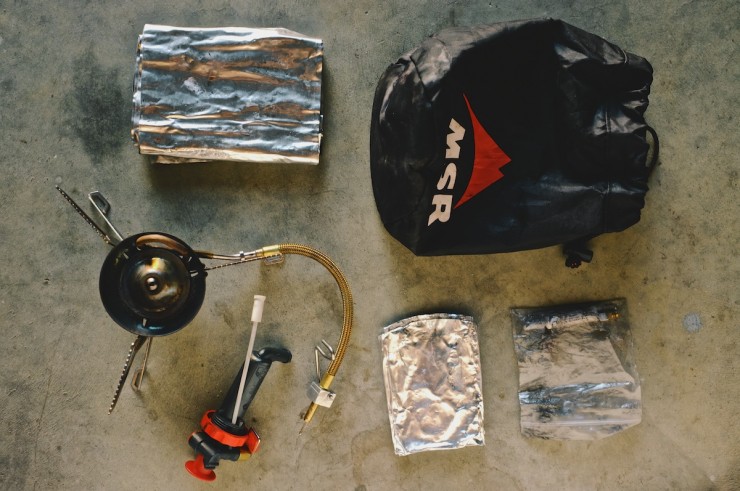
THINGS TO THINK ABOUT
- What kind of fuel can I get where I will be touring?
- Am I culinarily-inspired and in need of a finely tuned simmer? If so, it may not be your stove.
TIPS
- In Mexico and some of Guatemala you can find Gasolina Blanca (white gas) in Comex paint stores.
NOTES
- The Whisperlite Universal comes with attachment to use canister fuel (which I did see in several Central American countries) and it simmers when burning canister fuel – $139.
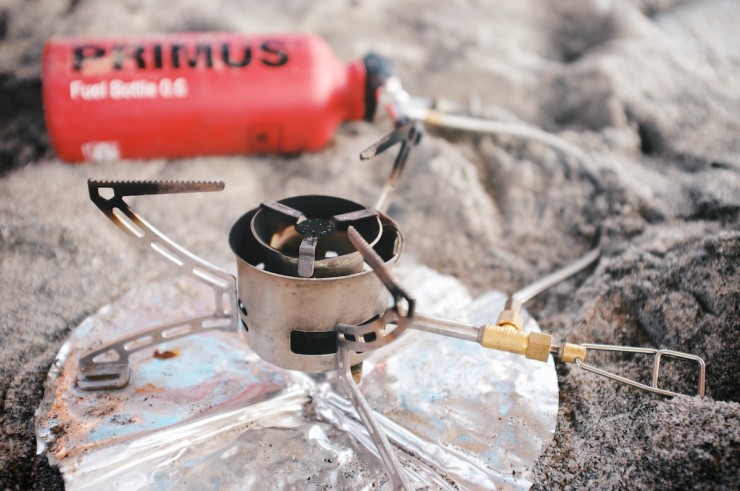
Primus Omnifuel
Lee, my touring comrade through Nicaragua, Costa Rica and Panama used the Primus Omnifuel. And because it was superior for simmering, we used it to make our nightly one-pot wonders. I usually made coffee in the AM with the Whisperlite. The Primus is a little more expensive than other stoves, but it certainly stands out in performance.
- Cost: $182 (approximately).
- Fuel: White gas, kerosene, diesel, unleaded gasoline, butane, aviation fuel, etc.
- Speed: Boils one liter of water in about 3 1/2 minutes.
- Weight: 530 grams (Stove, pump, stuff sack, windscreen, maintenance kit) – set up for liquid fuel.
- Packed dimensions: approximately 8″ x 8″ x 3″, but it can be packed smaller.
PROS
- Very good at simmering with liquid fuel.
- The pump of the Primus has metal parts and is more convincingly constructed.
- The Primus doesn’t seem as finicky as the MSR offerings.
- The flip flop bottle design allows you bleed out the remaining pressure and burn out the line… the stove is much cleaner and less sooty because of this and smells less of gasoline.
CONS
- Expensive.
- A bit loud (not nearly as loud as the Dragonfly, but definitely louder than the Whisperlite).
- Heavier than the Whisperlite.
THINGS TO THINK ABOUT
- If you really love cooking, the Primus is great for longer tours.
- The Primus stays much cleaner because of the line-bleed option. So if cleanliness is your thing, this may be your stove.
NOTES
- Primus now has a titanium version which is slightly lighter if you have the extra dough.
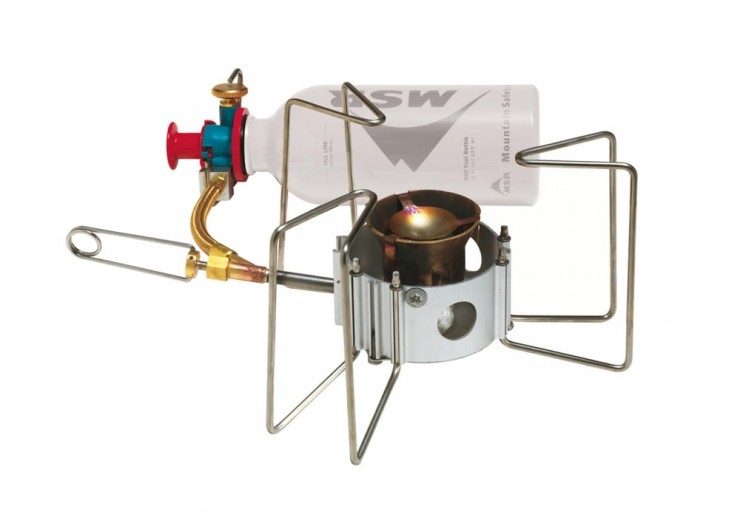
MSR Dragonfly
The MSR Dragonfly is somewhat similar to the Primus, although it’s MUCH louder. Mike used the Dragonfly on our tour and I had a hard time with this stove because of its loudness. Basically it was so loud, it made it difficult to have a conversation as dinner was being prepared. However, a lot of folks like this stove for it’s weight, size and simmer capabilities.
- Cost: $140 (approximately).
- Fuel: White gas, kerosene, diesel, unleaded, etc.
- Weight: 510 grams (Stove, pump, stuff sack, windscreen, maintenance kit).
- Speed: Boils one liter of water in about 3 1/2 minutes using white gas.
PROS
- Has a more stable platform than the Whisperlite for pots and pans.
- Boils a cup of water in about 1.5 minutes.
THINGS TO THINK ABOUT
- Will you be ‘stealth camping’? If so, the loudness of this thing may give you away.
- Do you like to have intimate conversations over the camp hearth during dinner prep?
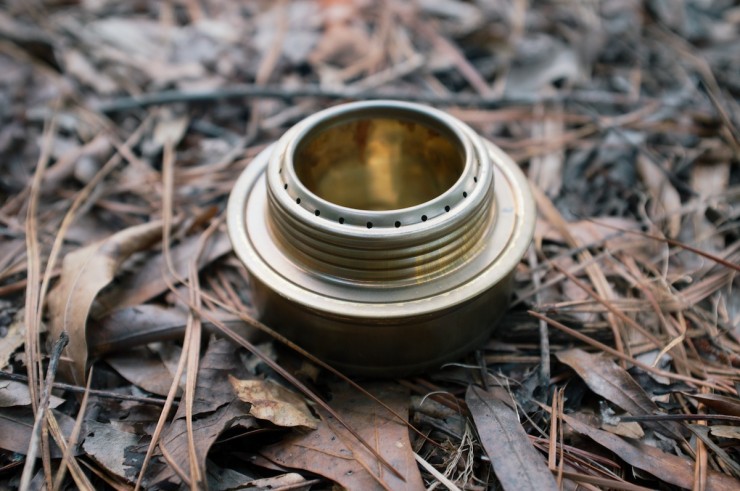
Trangia spirit burner
I ran across a couple folks that seemed to have pretty good luck finding medical grade alcohol throughout Central America to burn in their Trangia. Having been intrigued by this method of cooking, I recently bought a Trangia took it on an overnight bikepacking trip.
- Cost: $15 (approximately) / $25 (approximately).
- Fuel: Heet, methanol (methyl hydrate in Canada), denatured alcohol, Everclear, among other sprits.
- Speed: Boils one liter of water in about 10 minutes; Burned 40ml alcohol in 9.5 minutes.
- Weight: 111 grams / 186 grams with Esbit windscreen.
PROS
- You can carry fuel in any plastic bottle.
- Burns without any noise whatsoever.
- Extremely cheap.
- Ridiculously small and light.
- Fuel is cheaper than gasoline and petrol.
- Simmering is completely doable with the included simmer ring.
CONS
- It is very slow to boil water.
THINGS TO THINK ABOUT
- If you prefer peace and quiet, and you are not in a hurry, this may be your stove.
- Trangia also offers a multitude of cookware configurations with built in stand, windscreen, etc.


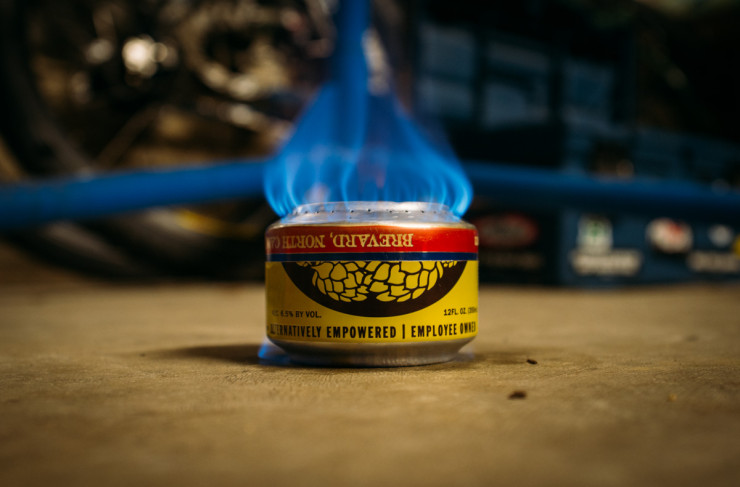
Do you have another stove that you think is great for bike travel? Post your suggestion below…
FILED IN (CATEGORIES & TAGS)
Bikepacking Gear
Camping Gear
Bikepacking Food
bike-touring-gear bike-touring-stoves bikepacking-stovesPlease keep the conversation civil, constructive, and inclusive, or your comment will be removed.






